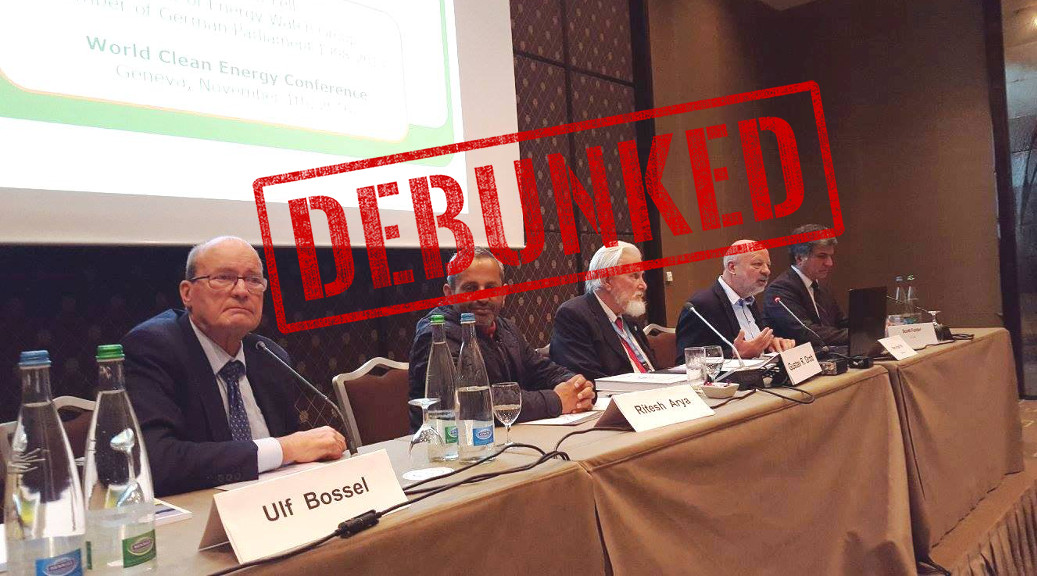Tag: water
-

Hydrogen and Water: Putting Consumption into Perspective
Introduction Hydrogen as a clean energy source has been the subject of increasing debate, with critics often citing the water consumption required for its production. While it is true that electrolysis—the process of splitting water into hydrogen and oxygen—requires water, the broader conversation about water usage is often neglected. Many of the same people who…
-

The Truth About Blue Hydrogen
Blue hydrogen is a net zero way of making hydrogen for cars, trucks, boats, ammonia, or anything for that matter. This means a lot of energy produced with no CO2, NOx, SOx, or particulate emissions. Recently some big announcements came out about blue hydrogen investments in Edmonton & Louisiana. These big announcements prompted anti-hydrogen critics…
-

Zero Emission Ammonia Production from Green Hydrogen
RMP’s new post about Zero Emission Ammonia Production from Green Hydrogen examines where we are in August 2020 with regard to scaling production of green hydrogen for green ammonia. Green Ammonia pilot projects are ongoing around the world but in this post, we examine why Australia is the world leader in green ammonia & how…
-

Gelman DIoxane 1,4 Plume Map Ann Arbor Michigan
RMP has just launched our first Generation 2 Google Map featuring the Gelman Dioxane 1,4 Plume in Ann Arbor, Michigan. Check out our new map & see how easy it is to learn all about the Gelman Dioxane 1,4 Plume by watching a short YouTube video.
-

General Motors Defense LLC – Full Size Fuel Cell Pickup Truck – The ZH2
GM Defense LLC was recently launched & the new ZH2 full size pickup truck platform was introduced at AUSA in Washington DC. In this post, RMP takes a look at the new full size fuel cell vehicle & it’s impressive stats. Click through to check out some pictures & a couple cool videos of these…
-

Debunking Dr. Bossel’s Anti-Hydrogen Thesis
In this post RMP debunks Dr. Ulf Bossel’s anti-hydrogen thesis that has been propagated for years and was even published as recent as October 26, 2017 by Electrek. Dr. Bossel’s thesis says that making hydrogen is wasteful but ironically terawatt hours of electricity are being curtailed or wasted because we are not using that energy…
-

2016 Michigan Hydrocarbon Production Results January – June
At this point in October of 2016, all the reporting through the first six months of 2016 is complete. RMP has again downloaded, parsed, and analyzed the Michigan hydrocarbon production data for the Michigan Basin. Click through to check out our reporting and graphical analysis of Michigan Basin production. This post’s cover photo was taken…
-

Michigan Oil & Gas Monthly – July 2016
This month a group calling themselves the MICATS staged a protest at Attorney General Bill Schuette’s home in Midland, Michigan. The Detroit News has a story here. For the record, I have never supported extremist groups or individuals like those in MICATS and neither has respectmyplanet.org. I don’t know them, affiliate with them, or in any way…
-

Interactive Ann Arbor Dioxane Plume Map Demo
Check out RMP’s demonstration map of the Ann Arbor Dioxane Plume. This map gives an example of grafting an overlay to a Google Map. RMP’s maps can do a lot more than this demonstration but we can’t get further without your financial support. Check out the map and let us know what you think.
-

Michigan Oil & Gas Production Report January – December 2015
The 2015 full year petroleum production numbers are, according to RMP estimates, 98% reported. That means it’s time to review a whole host of tables and graphs showing you the top hydrocarbon producers in the Michigan Basin for 2015. Check out this annual production summary to see what got produced and where in Michigan. Also,…
-

Landfill #27 At Wurtsmith Air Force Base
Check out our interactive map of ground water contamination at the former Wurtsmith Air Force Base in Oscoda, Michigan. RMP considers Wurtsmith on our top 10 list of environmentally contaminated hot spots in the Michigan Basin. Perfluorinated compounds (PFCs) in fish surrounding WAFB were so high that Michigan Department of Community Health issued fish advisories…
-

Michigan Oil & Gas Monthly – February 2016
Check out the February “follow-up” edition of RMP’s Michigan Oil & Gas Monthly magazine. This month we revisit the Word of Faith 16-27 application for an oil well in the City of Southfield. Thousands of comments have been received and made public by the MDEQ. This month we take a closer look at public sentiment…